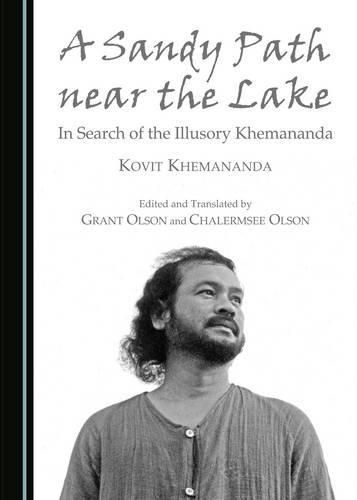Readings Newsletter
Become a Readings Member to make your shopping experience even easier.
Sign in or sign up for free!
You’re not far away from qualifying for FREE standard shipping within Australia
You’ve qualified for FREE standard shipping within Australia
The cart is loading…






This book presents the long-awaited autobiography of Kovit Khemananda, a Thai Buddhist artist and spiritual teacher. Kovit’s life story begins near his home village of Tha Khura in Southern Thailand, on the shores of Songkhla Lake. He relates growing up surrounded by unique local traditions and abundant natural resources, including flora and fauna. His own powers of observation are transformed into an aesthetic sense, and then into an insightful spiritual quest. Kovit seeks meaning in the Thai landscape and beyond. His story of seeking reveals some of the strengths of Thai traditions, as well as their limitations. Kovit, for example, does not find the usual Thai recipe for success suitable for him at all. He suggests that one of the only ways we can truly know ourselves is to find a way to back ourselves into a corner, questioning ingrained social assumptions. In this way, his path ends up taking him into the Buddhist monkhood and out again; and his path leads to sojourns abroad and back again in search of refuge and spiritual meaning. In the process, Kovit ponders the Buddhist construction of self, the value of art, and the possibility of creating shared spiritual meaning in the modern world. Kovit’s story recounts an engaging path of frustration and liberation. As the poet Naowarat Pongpaiboon recognised, Kovit helps us all crack the code of the human condition and the Buddhist Dhamma.
$9.00 standard shipping within Australia
FREE standard shipping within Australia for orders over $100.00
Express & International shipping calculated at checkout
This book presents the long-awaited autobiography of Kovit Khemananda, a Thai Buddhist artist and spiritual teacher. Kovit’s life story begins near his home village of Tha Khura in Southern Thailand, on the shores of Songkhla Lake. He relates growing up surrounded by unique local traditions and abundant natural resources, including flora and fauna. His own powers of observation are transformed into an aesthetic sense, and then into an insightful spiritual quest. Kovit seeks meaning in the Thai landscape and beyond. His story of seeking reveals some of the strengths of Thai traditions, as well as their limitations. Kovit, for example, does not find the usual Thai recipe for success suitable for him at all. He suggests that one of the only ways we can truly know ourselves is to find a way to back ourselves into a corner, questioning ingrained social assumptions. In this way, his path ends up taking him into the Buddhist monkhood and out again; and his path leads to sojourns abroad and back again in search of refuge and spiritual meaning. In the process, Kovit ponders the Buddhist construction of self, the value of art, and the possibility of creating shared spiritual meaning in the modern world. Kovit’s story recounts an engaging path of frustration and liberation. As the poet Naowarat Pongpaiboon recognised, Kovit helps us all crack the code of the human condition and the Buddhist Dhamma.